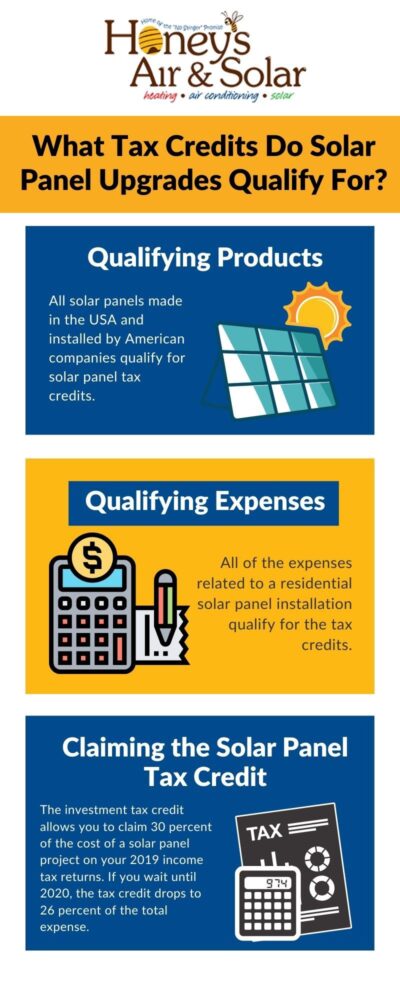As licensed energy professionals in Modesto, our technicians at Honey's Air & Solar look forward to helping you create a more energy-efficient home with solar panels. If you have been considering installing solar panels, 2019 is an ideal time because of the available tax credits. Some of these tax credits are set to decrease or expire in 2020.

Qualifying Products
All solar panels made in the USA and installed by American companies qualify for solar panel tax credits. You must be the owner of your solar panel system. This means that if you signed an agreement with a utility company to install solar panels on your house, you do not qualify. You must be the one paying for the solar panels, and you must own the entire system. If you already had solar panels, but you need to replace them, your upgraded new panels will still qualify you for the credits.
Qualifying Expenses
All of the expenses related to a residential solar panel installation qualify for the tax credits. This includes the cost of the panels, the cost of associated parts such as batteries or wiring and the labor fees for the installation. You can receive the credit for a solar panel installation on your primary residence or on a vacation home that you only use a few weeks per year.
Claiming the Solar Panel Tax Credit
The Energy Policy Act of 2005 established a tax credit for the installation of solar panels on homes. The investment tax credit allows you to claim 30 percent of the cost of a solar panel project on your 2019 income tax returns. If you wait until 2020, the tax credit drops to 26 percent of the total expense. After 2022, the tax credit drops to 22 percent. If taking the full 30 percent credit would lower your tax obligation to $0, you can roll over the extra credits to the next year’s income tax returns. You must complete IRS Form 5695 in order to claim the credits.
To learn more about solar panels and the available tax credits, contact us at Honey's Air & Solar today.


